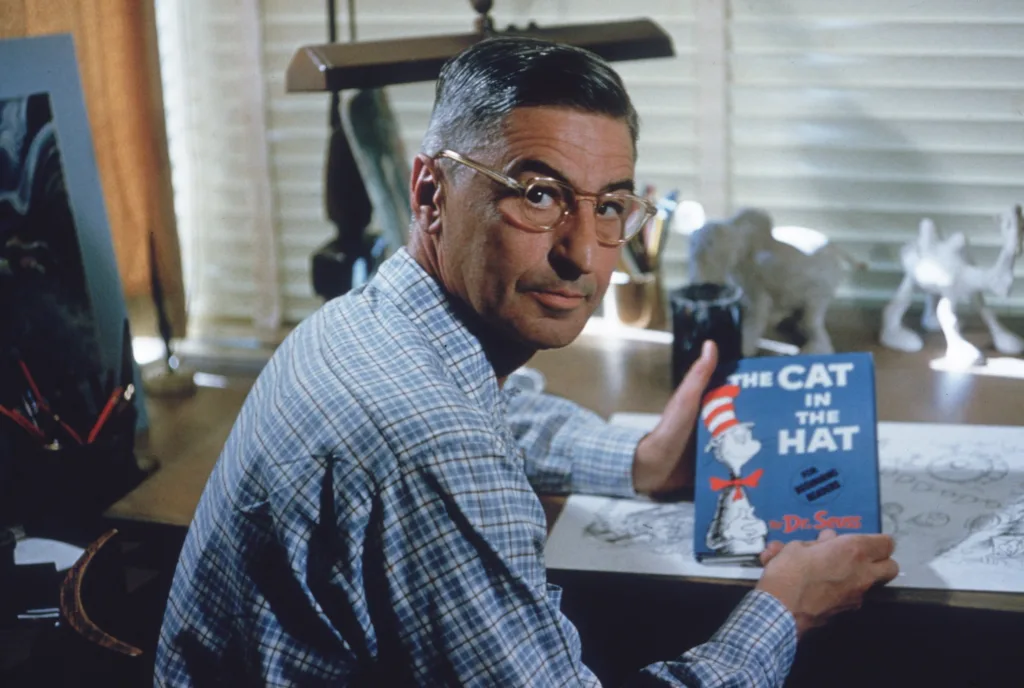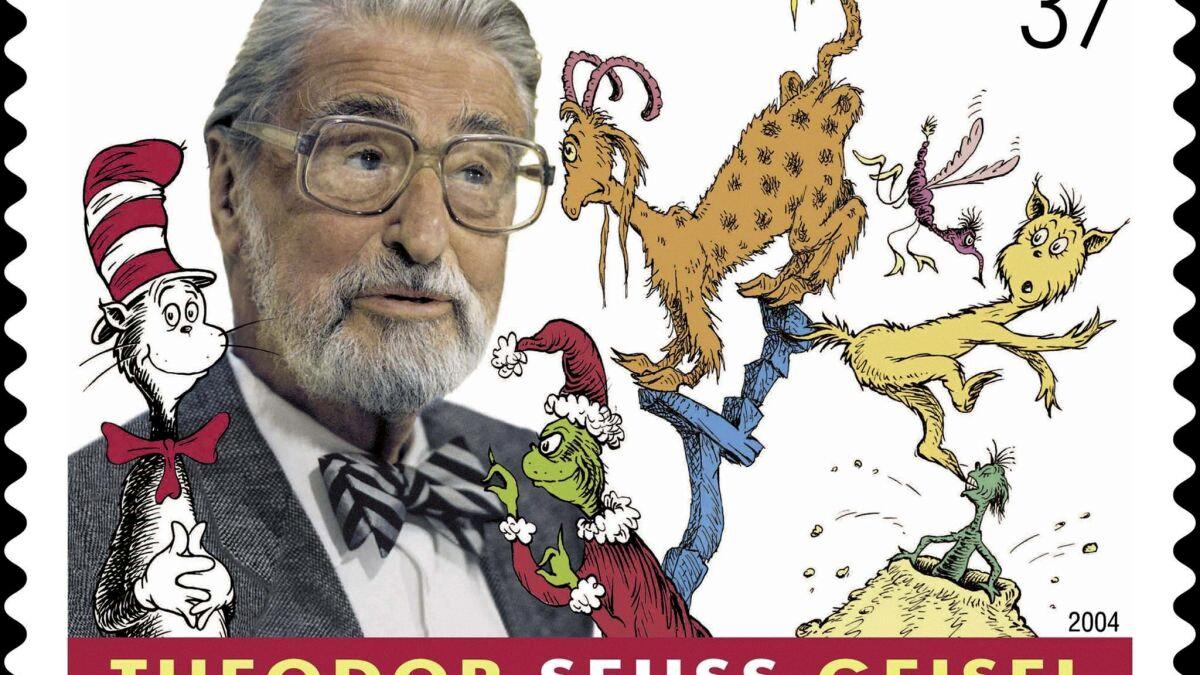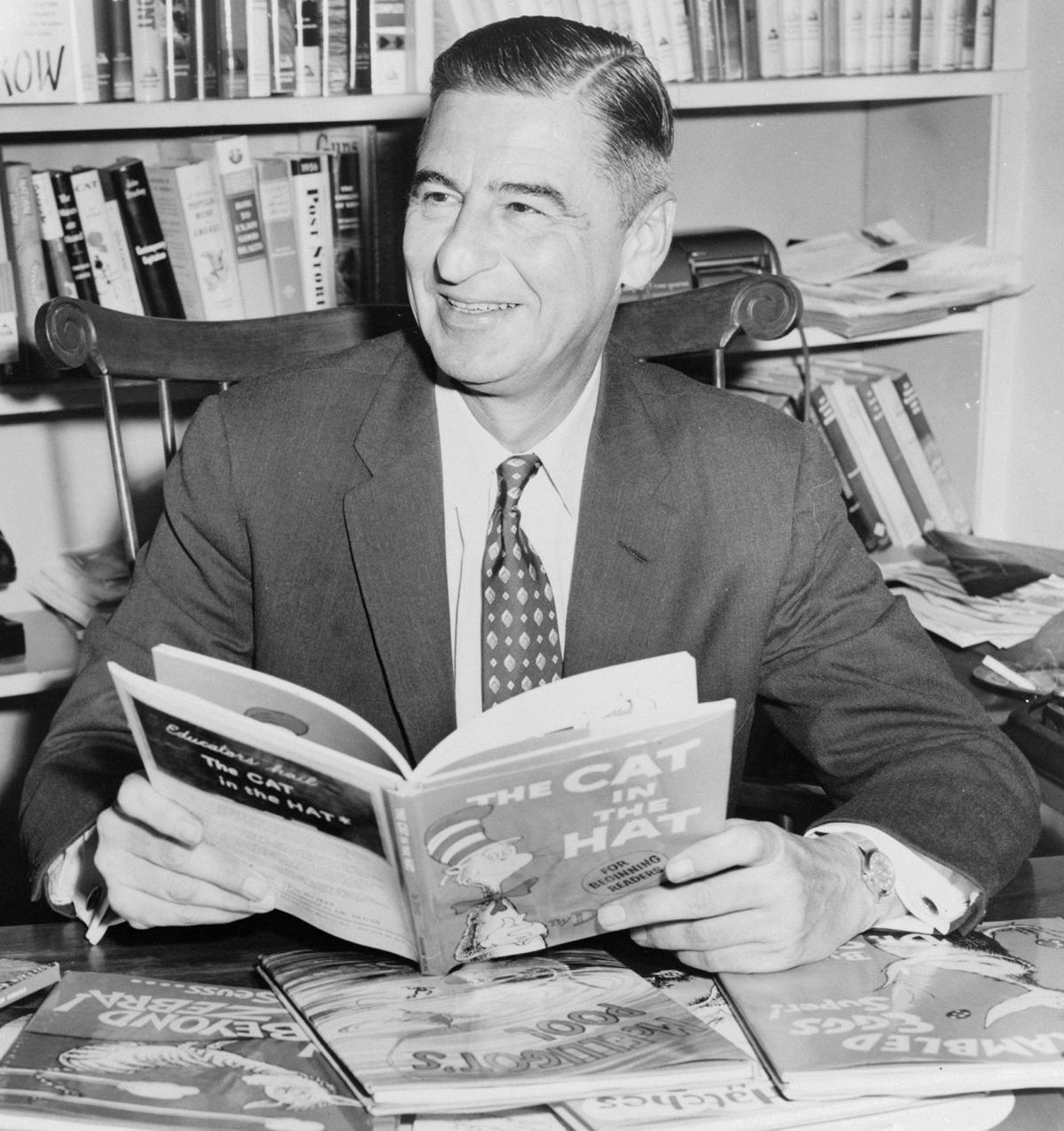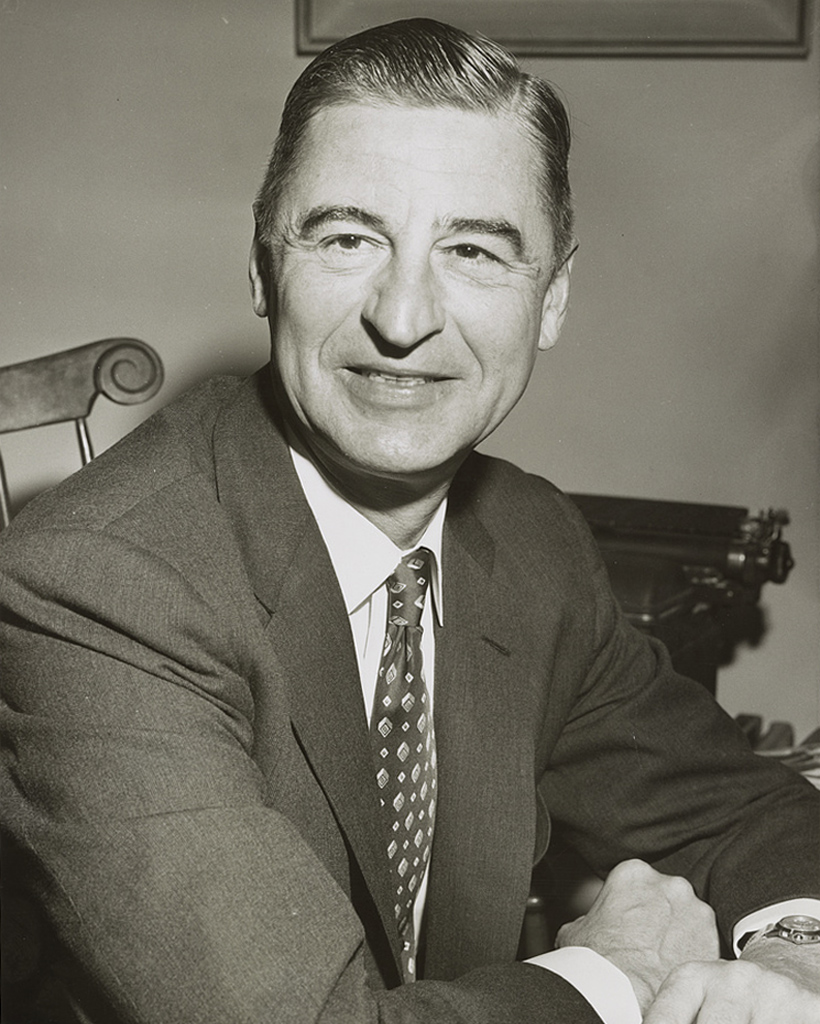Dr. Seuss, whose real name was Theodor Seuss Geisel, was a beloved children’s author who influenced generations with his whimsical and playful books. However, few people know that Dr. Seuss died from oral cancer in 1991.
In the early 1980s, Seuss was diagnosed with oral cancer after a dentist discovered a lesion on his tongue. He underwent surgery to remove the cancerous tissue, but a few years later, he developed a jaw infection that doctors were unable to cure. This infection was likely a complication of his earlier cancer treatment.
Despite his health challenges, Seuss continued to work on his writing and publishing projects. He wrote several books after his cancer diagnosis, including “Oh, the Places You’ll Go!” and “The Butter Battle Book.”
Seuss’s death in 1991 at the age of 87 was a great loss to the literary world. His books continue to be popular today, and his influence can be seen in the work of many contemporary children’s authors.
One interesting fact about Seuss is that he never had any biological children. His fist wife, Helen Geisel, was unable to bear children, and he did not father any children with his second wife, Audrey. However, he was a stepfather to Audrey’s two daughters.
Dr. Seuss’s death from oral cancer was a tragedy, but his legacy lives on through his many beloved books. His work continues to inspire and delight children and adults alike, and he will always be remembered as one of the greatest children’s authors of all time.
Diagnosis of Dr. Seuss
Dr. Seuss, also known as Theodor Seuss Geisel, was diagnosed with oral cancer in the early 1980s. This diagnosis was made after a dentist discovered a cancerous growth on his tongue. To prevent the cancer from spreading, Seuss underwent surgery. However, a few years later, he developed a jaw infection that doctors were unable to cure. This infection was likely related to his cancer diagnosis and treatment. Sadly, Seuss passed away on September 24th, 1991, at the age of 87.

Dr. Seuss’s Last Words
Dr. Seuss, the beloved children’s book author, passed away on September 24, 1991. His last words are reported to be, “We can . . . and we’ve got to . . . do better than this.” While the exact context of these words is not known, they are often interpreted as a call to action for individuals to work towards making the world a better place.
Dr. Seuss, whose real name was Theodor Geisel, was known for his imaginative and whimsical stories, as well as his clever use of language and rhyme. He authored over 60 books, many of whch have become classics in the world of children’s literature.
His legacy continues to inspire generations of readers and writers, and his last words serve as a poignant reminder to strive for a better future.
The Legacy of Dr. Seuss
Dr. Seuss, also known as Theodor Seuss Geisel, passed away in 1991. He was a highly acclaimed children’s book author and illustrator, with a career that spanned severl decades and produced numerous books that have helped teach children how to read. Dr. Seuss was known for his use of playful, rhythmic language and whimsical illustrations, which have become iconic in the world of children’s literature.
Despite his passing, Dr. Seuss’s legacy continues to live on. His books continue to be popular among children and adults alike, and have been translated into numerous languages. In addition, his influence can be seen in the work of many other children’s book authors and illustrators who have followed in his footsteps.
Dr. Seuss’s impact on children’s literature has been significant. His books have helped teach generations of children to read and have inspired countless others to pursue careers in writing and illustration. His contributions to the world of children’s literature will be remembered for generations to come.
Does Dr. Seuss Have A Child?
The beloved children’s book author Dr. Seuss, whose real name was Theodor Seuss Geisel, did not have any biological children. His first wife, Helen Geisel, was unable to conceive, and the couple remained childless throughout their marriage. After Helen’s death, Geisel remarried to a woman named Audrey Stone Dimond. Although Geisel was a stepfather to Audrey’s two daughters, he did not father any children with her. Therefore, Dr. Seuss did not have any biological or direct offspring.
Removal of Books by Dr. Seuss and the Reasons Behind It
Recently, Dr. Seuss Enterprises announced that six of their books would no longer be published due to racist imagery. These books include “And to Think That I Saw It on Mulberry Street”, “If I Ran the Zoo”, “McElligot’s Pool”, “On Beyond Zebra!”, “Scrambled Eggs Super!”, and “The Cat’s Quizzer”.
The decision to remove these books was made ater consulting with educators and reviewing feedback from their audience. Dr. Seuss Enterprises stated that they want to ensure all of their books “represent and support all communities and families.”
In these six books, there are images and references that have been deemed offensive and harmful. For example, in “And to Think That I Saw It on Mulberry Street”, there is a depiction of a Chinese man wearing a conical hat and holding chopsticks. In “If I Ran the Zoo”, there are depictions of African people as “exotic” and “non-human”.
Dr. Seuss Enterprises has also stated that they will continue to review their catalog of books and make necessary changes to ensure they are inclusive and respectful to all communities.
It is important to note that this decision to remove these six books from publication is not censorship or erasure of history. Rather, it is a step towards promoting inclusivity and respect for all communities.

Source: latimes.com
The Six Books Dr. Seuss Stopped Writing
Dr. Seuss, a beloved author of children’s books, has recently made a decision to discontinue six of his books due to their racist and insensitive imagery. The affected books are “And to Think That I Saw It on Mulberry Street,” “If I Ran the Zoo,” “McElligot’s Pool,” “On Beyond Zebra!,” “Scrambled Eggs Super!,” and “The Cat’s Quizzer.”
The decision was made in an effort to promote inclusivity and respect towars all individuals, regardless of race or ethnicity. The imagery and language used in these books have been deemed offensive and inappropriate for modern society.
“And to Think That I Saw It on Mulberry Street” and “If I Ran the Zoo” have been criticized for their portrayal of non-white characters as exotic and stereotypical. “McElligot’s Pool” has been criticized for its depiction of an Asian character with a derogatory name. “On Beyond Zebra!,” “Scrambled Eggs Super!,” and “The Cat’s Quizzer” have been criticized for their use of offensive language and imagery towards African and Asian characters.
Dr. Seuss’s decision to discontinue these books has been met with both support and criticism. While some individuals believe that it is important to acknowledge and address past mistakes, others argue that it is erasing history and censorship.
Regardless of one’s stance on the issue, it is important to recognize the impact of these books on children’s perceptions of race and ethnicity. By discontinuing these books, Dr. Seuss is taking a step towards promoting inclusivity and respect towards all individuals.
The Most Famous Quote of Dr. Seuss
Dr. Seuss, also known as Theodore Geisel, was a famous children’s book author who has left a significant impact on literature. Throughout his career, he has written numerous books with inspiring and motivational messages that have touched generations of readers.
One of the most famous quotes from Dr. Seuss is, “Today you are You, that is truer than true. There is no one alive who is Youer than You.” This quote emphasizes the importance of self-acceptance and being true to oneself. It encourages individuals to embrace their uniqueness and not be afraid to stand out from the crowd.
Another well-known quote by Dr. Seuss is, “You’re off to Great Places! Today is your day! Your mountain is waiting, so get on your way!” This quote is oten used as a motivational statement, inspiring individuals to pursue their dreams and not be afraid to take risks.
Dr. Seuss also believed in the power of kindness and caring for others. His quote, “Unless someone like you cares a whole awful lot, Nothing is going to get better. It’s not,” emphasizes the importance of taking action and making a difference in the world.
In addition, Dr. Seuss encouraged individuals to think outside the box and not limit themselves. His quote, “Think left and think right and think low and think high. Oh, the thinks you can think up if only you try!” encourages individuals to be creative and explore all possibilities.
Dr. Seuss’ quote, “You’ll miss the best things if you keep your eyes shut,” reminds individuals to stay open-minded and not miss out on opportunities or experiences due to fear or hesitation.
Dr. Seuss’ quotes have become timeless and continue to inspire individuals of all ages to be true to themselves, pursue their dreams, care for others, and think creatively.
The Removal of Dr. Seuss from Popular Culture
Dr. Seuss is a beloved author of children’s books, but in recent years, his works have come under scrutiny for containing outdated and insensitive depictions of racial, ethnic, cultural, and gender differences. Some of his illustrations and characters have been criticized for perpetuating harmful stereotypes and caricatures.
As a result, librarians and scholars have led a push to re-evaluate children’s classics that contain such depictions. This has led to some of Dr. Seuss’s books beig “taken down” or removed from circulation in some educational settings.
For example, in March 2021, Dr. Seuss Enterprises, the company that oversees the late author’s works, announced that six of his books would no longer be published due to racist and insensitive imagery. The books include “And to Think That I Saw It on Mulberry Street,” “If I Ran the Zoo,” and “Scrambled Eggs Super!”
While Dr. Seuss’s books continue to be popular with many readers, the decision to remove some of them from circulation reflects a growing awareness of the harm that harmful stereotypes and caricatures can cause. By re-evaluating children’s classics and removing those that perpetuate harmful ideas, educators and parents can help create a more inclusive and equitable learning environment for young people.
Four Interesting Facts About Dr. Seuss
Theodor Seuss Geisel, better known as Dr. Seuss, was an American writer and illustrator who left a lasting impact on children’s literature. Here are four interesting facts about this beloved author:
1. Dr. Seuss’s first book was rejected by 27 publishers before being published: Before becoming a successful children’s author, Dr. Seuss faced numerous rejections. His first book, And to Think That I Saw It on Mulberry Street, was rejected by 27 publishers before finally being published.
2. Dr. Seuss never had children of his own: Despite writing dozens of children’s books, Dr. Seuss never had any children of his own. He was married twice, but he and his second wife, Audrey, never had any kids.
3. Dr. Seuss was not a doctor: Despite the “Dr.” in his pen name, Dr. Seuss was not a medical doctor. The title was given to him by his father, who encouraged him to pursue a career in academia.
4. Dr. Seuss’s books have sold over 600 million copies worldwide: Dr. Seuss’s books have been translated into more than 20 languages and have sold over 600 million copies worldwide. Some of his most famous works include The Cat in the Hat, Green Eggs and Ham, and How the Grinch Stole Christmas!.

Source: wikidata.org
The Impact of Dr. Seuss on Animals
Dr. Seuss, also known as Theodor Geisel, created a series of sculptures that he called his “Unorthodox Taxidermy.” These sculptures were created using real horns, beaks, and antlers from various animals. However, it’s important to note that Dr. Seuss did not harm any animals in the making of these sculptures.
Instead, he obtained the animal parts from a variety of sources, including hunters and farmers who had already harvested the animals for meat. Once he had the necessary parts, Dr. Seuss used his creative talent to fashion them into whimsical creatures that look like they jumped right out of his books.
Some examples of the creatures he created include the “Two-Horned Drouberhannis,” wich features two antelope horns and a seal’s head, and the “Goo-Goo-Eyed Tasmanian Wolghast,” which is made up of a walrus muzzle, a lion’s mane, and a pair of horns from a water buffalo.
It’s worth noting that Dr. Seuss’s sculptures were purely for artistic purposes and were not intended to promote the hunting or harming of animals. In fact, many of his books, such as “The Lorax,” promote environmental conservation and the protection of wildlife.
Dr. Seuss’s “Unorthodox Taxidermy” sculptures showcase his incredible imagination and creativity, as well as his love for animals and nature.
Who is the Current Owner of Dr. Seuss?
Dr. Seuss Enterprises, the company that manages the legacy and intellectual property of the beloved children’s author, is now owned by a private foundation. Audrey Geisel, the widow of the late author, established the company, and it continues to operate as a for-profit venture. However, all profits generated by Dr. Seuss Enterprises are donated to various charitable organizations, including the San Diego Zoo and The Old Globe theater in San Diego.
The private foundation that currently owns Dr. Seuss Enterprises is not widely known, and details abut its operations and leadership are not readily available to the public. Nonetheless, the foundation has continued to manage and promote Dr. Seuss’s works and characters, ensuring that his legacy endures for future generations.
Despite some recent controversy over certain Dr. Seuss books and their depictions of race and ethnicity, the author’s impact on children’s literature and popular culture remains significant. Dr. Seuss Enterprises continues to release new editions of his classic books, as well as adaptations and merchandise featuring his beloved characters like the Cat in the Hat, the Grinch, and Horton the Elephant.
Dr. Seuss’s Decision to Not Have Children
The famous children’s author Dr. Seuss, whose real name was Theodor Geisel, never had children. According to his wife, Audrey Geisel, he was content with not bing a father and would have never been happy with the responsibilities that came with it. It is important to note that Dr. Seuss had a successful career as a writer and illustrator, creating beloved characters and stories that continue to captivate children and adults alike. It is possible that he felt fulfilled by his work and did not feel the need to have children to complete his life. Furthermore, being a parent requires a significant amount of time and energy, which may have taken away from his creative pursuits. Dr. Seuss’s decision not to have children was a personal one and did not affect his legacy as a beloved author and cultural icon.
Did Dr. Seuss Create New Words?
Dr. Seuss invented a word. The word is “nerd,” which was first used in his 1950 book “If I Ran the Zoo.” The word was coined by the narrator of the story, who mentioned that he would collect “a Nerkle, a Nerd, and a seersucker too” for his imaginary zoo. The exact meaning of the word “nerd” was not explicitly defined in the book, but it has since become assocated with someone who is highly intelligent but socially awkward or unpopular. Dr. Seuss was known for his creative use of language and his ability to invent new words, which contributed to the popularity of his books among children and adults alike.

The Origin of the Word Grinch
The word “Grinch” was not originally coined by Dr. Seuss, the famous children’s book author who popularized it in his 1957 book “How the Grinch Stole Christmas!” In fact, the word was first used by Rudyard Kipling in his 1892 poem “The Lament of the Border Cattle Thief,” where he used it as an onomatopoetic participle to describe a harsh grating sound – “grinching.” However, it was Dr. Seuss who made the word “Grinch” a household name, and it has been associated with his iconic character ever since. The Grinch, as depicted by Dr. Seuss, is a grouchy, green creature who hates Christmas and tries to steal it from the Whos in Whoville. The character has since become a beloved figure in popular culture, and the word “Grinch” has taken on a broader meaning to refer to anyone who is a bit of a curmudgeon or spoilsport durig the holiday season.
The Length of Dr. Seuss’s Longest Book
Dr. Seuss, whose real name was Theodor Seuss Geisel, was an American writer and illustrator who became famous for his children’s books. He wrote many beloved stories, including “The Cat in the Hat,” “Green Eggs and Ham,” and “How the Grinch Stole Christmas!” However, when it comes to his longest book, the winner is “The Cat in the Hat Comes Back.”
Published in 1958, “The Cat in the Hat Comes Back” is the sequel to the original “The Cat in the Hat” book. It follows the mischievous feline as he returns to the home of the two children from the first book and caues even more chaos. The story is 63 pages long, making it Dr. Seuss’s longest book.
In typical Dr. Seuss fashion, the book is filled with rhymes, colorful illustrations, and silly characters, making it a favorite among children and adults alike. It is also a great example of Dr. Seuss’s unique storytelling style, which often included made-up words and imaginative creatures.
“The Cat in the Hat Comes Back” is a classic Dr. Seuss book that has stood the test of time. Its length may be longer than some of his other works, but it still captures the same sense of humor and whimsy that made Dr. Seuss a household name.
Conclusion
Dr. Seuss was a beloved children’s author whose impact on literature and education is immeasurable. Despite facing personal challenges, including a battle with oral cancer, Seuss continued to create whimsical stories that inspired and entertained generations of readers.
His unique writing style, marked by playful language and anti-authoritarian themes, helped to revolutionize children’s literature and inspire a love of reading in countless young minds. Through his books, Seuss taught important lessons about acceptance, kindness, and the joy of imagination.
While Seuss did not have any biological children, his impact on the world of children’s literature and education is a lasting legacy that will continue to inspire generations to come. His books have been translated into multiple languages and adapted into movies and TV shows, ensuring that his messages of hope and humor will continue to reach new audiences for years to come.
In short, Dr. Seuss was a true visionary whose contributions to the world of children’s literature and education will nver be forgotten. His legacy lives on through his books, his words, and the countless lives he touched with his unique brand of storytelling.
